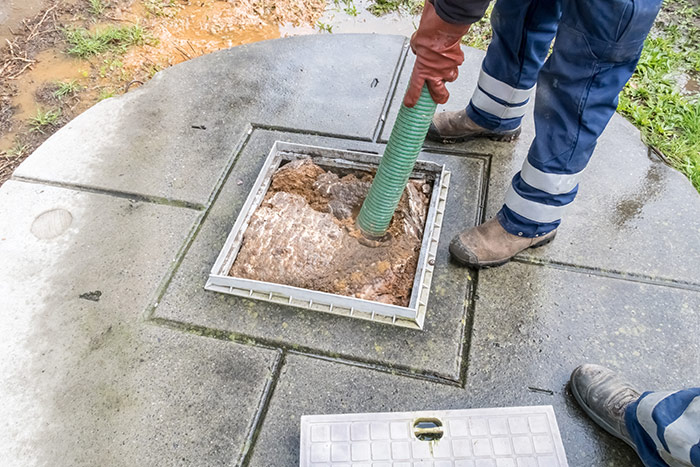
Failing Septic Systems
How can I prevent a septic system failure?
- Regular maintenance is the best method to prevent a septic system failure. Septic maintenance includes inspecting the entire system every 1 to 3 years and pumping the tank every 3 to 5 years. The frequency for pumping the septic tank depends on the tank size, number of people in the household, the water habits and use, if a garbage disposal is used, and the amount of solids accumulated in the tank. A rule of thumb is to pump the tank when the solids are two-thirds of the volume in the tank. Routine maintenance is the responsibility of the home or property owner. If you rent a home, you have responsibility for the proper use and operation of the system.
- In general, you can avoid a septic system failure by:
- Inspecting your system every 1 to 3 years
- Pumping the tank every 3 to 5 years or as needed
- Avoiding excess water use (e.g. spreading out laundry use over the week)
- Flushing only human waste and toilet paper down the toilet.
What are common signs of a failing septic system?
- Water and sewage from toilets, drains, and sinks backing up into the home’s plumbing
- Bathtubs, showers, and sinks draining very slowly
- Gurgling sounds in the plumbing system
- Standing water or damp spots near or over the septic tank or drainfield
- Sewage odors around the septic tank or drainfield
- Bright green, spongy lush grass over the septic tank or drainfield, even during dry weather
- Straight pipe discharging untreated wastewater to the ground surface
- Algae blooms in nearby lakes or waterbodies
- High levels of nitrates or coliform bacteria in surface waters or drinking water wells
Do you need a new septic system? Contact Morse Engineering and Construction.
Source: EPA.GOV>
